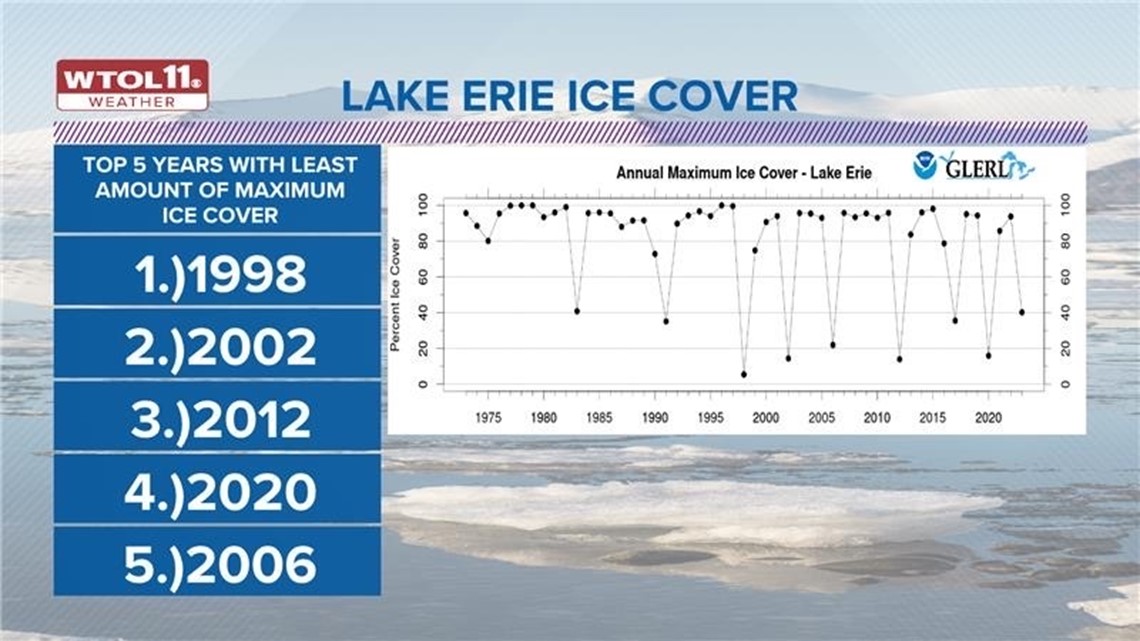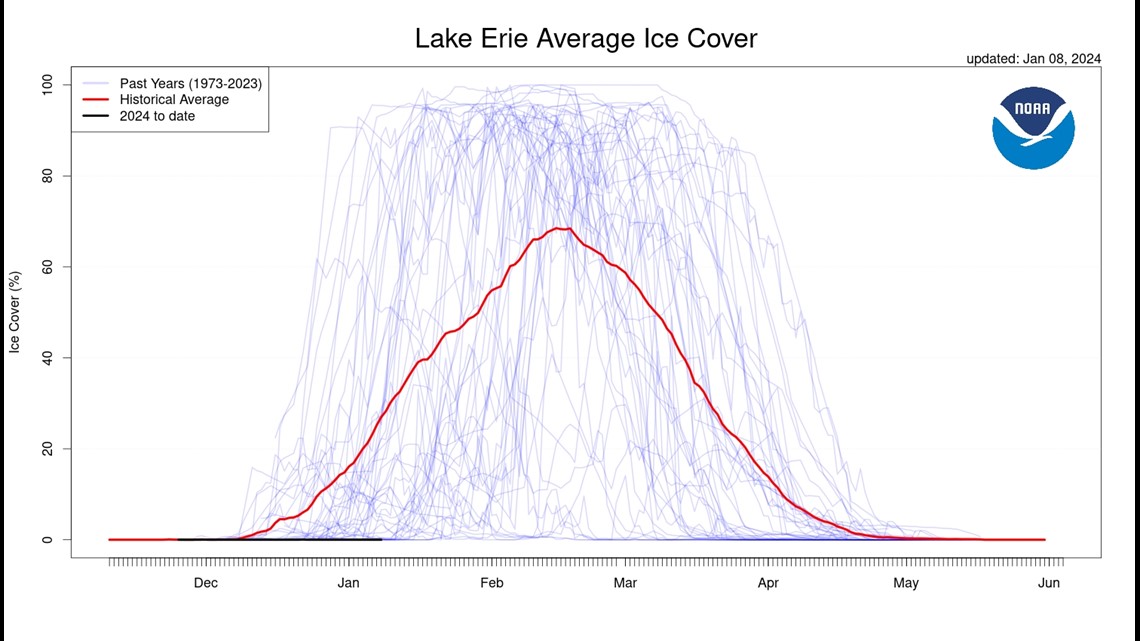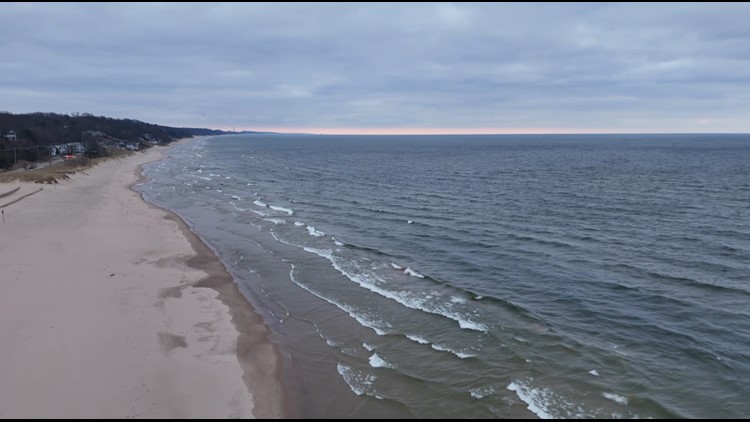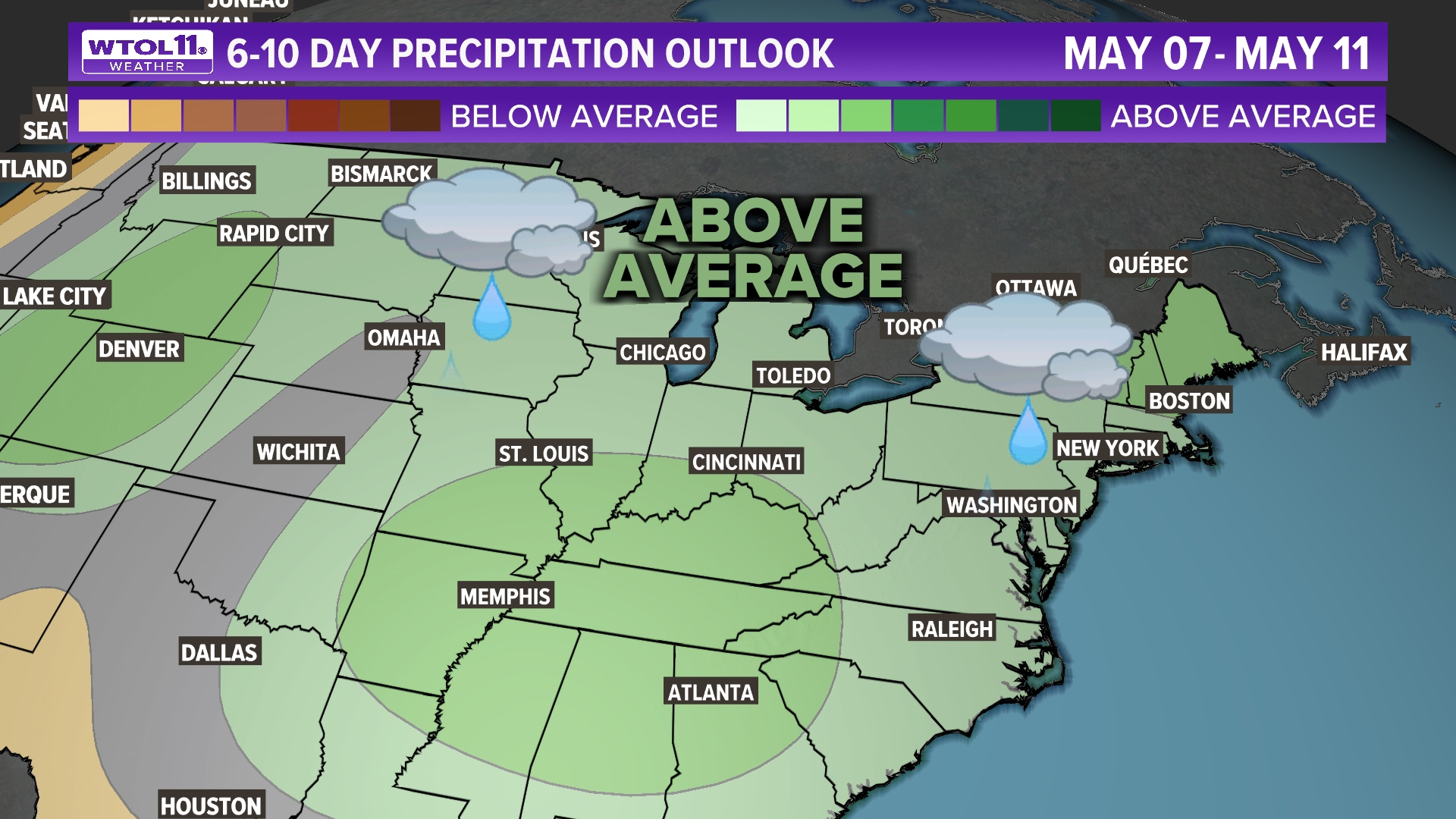TOLEDO, Ohio — Ice coverage on Lake Erie sits at a clean zero percent, according to the Great Lakes Environmental Research Laboratory, which operates out of the National Oceanic and Atmospheric Administration and has been tracking Great Lakes ice coverage since 1973.
While winter is far from over, an unseasonably warm December in northwest Ohio and beyond gave the Great Lakes little opportunity to freeze over: since Nov. 25, Lake Erie has only measured a maximum of 0.04 percent ice coverage, measured on Dec. 22, 2023. Since then, and as of Jan. 9, 2024, zero percent of Lake Erie was covered by ice. To view daily ice coverage on all five Great Lakes, click here.
As the shallowest Great Lake with a maximum depth of just over 200 feet, and as the second smallest in square mileage behind Ontario, Lake Erie is the fastest to freeze and usually has a higher percentage of ice coverage than the other four, according to NOAA data. Since 1973, only 12 of the 50 years have seen a maximum ice coverage of less than 80%; six of those have been in the last 20 years.


The recent increase of lessened Lake Erie ice is due to milder winters, climatologists and scientists said. A shorter, milder winter means each of the Great Lakes, Erie included, will experience on average, less ice coverage.
This phenomenon is experienced across the Great Lakes. The long-term average maximum ice coverage across all five lakes is 53%, something only met or surpassed five times in the last 10 years, or only 50% of years during that span.
READ MORE: Is our winter season shrinking?
Although the winter is far from over, historical data can indicate whether Lake Erie is ahead of or behind schedule on ice coverage. By Jan. 9 of each year, Lake Erie has seen approximately 28.82% ice cover on average, though that number can vary drastically by year. In 1977, 95.4% of Lake Erie was covered by ice by that date; at the other end of the spectrum, in 2019 and 2020, zero percent of Lake Erie was covered by ice as of Jan. 9.


Moreover, since Lake Erie is covered by no ice at all, according to NOAA data, it is far behind the 28.82% coverage average that should be met by Jan. 9.
But the conditions in early January do not necessarily define the greater ice coverage present in the rest of the season. For example, despite its slow start, 2019 ended up seeing some of the most ice coverage in years recorded, with maximum coverage for the year standing at 81% after a mid-January cold snap.
The WTOL 11 Weather Team is forecasting bitterly cold conditions next week, with high temperatures in the teens and low temperatures at or even below zero. It is likely ice coverage on Lake Erie and the other Great Lakes will see increased ice coverage after colder conditions arrive, but how long it lasts will also be dependent on greater climatological patterns.
RELATED VIDEOS



